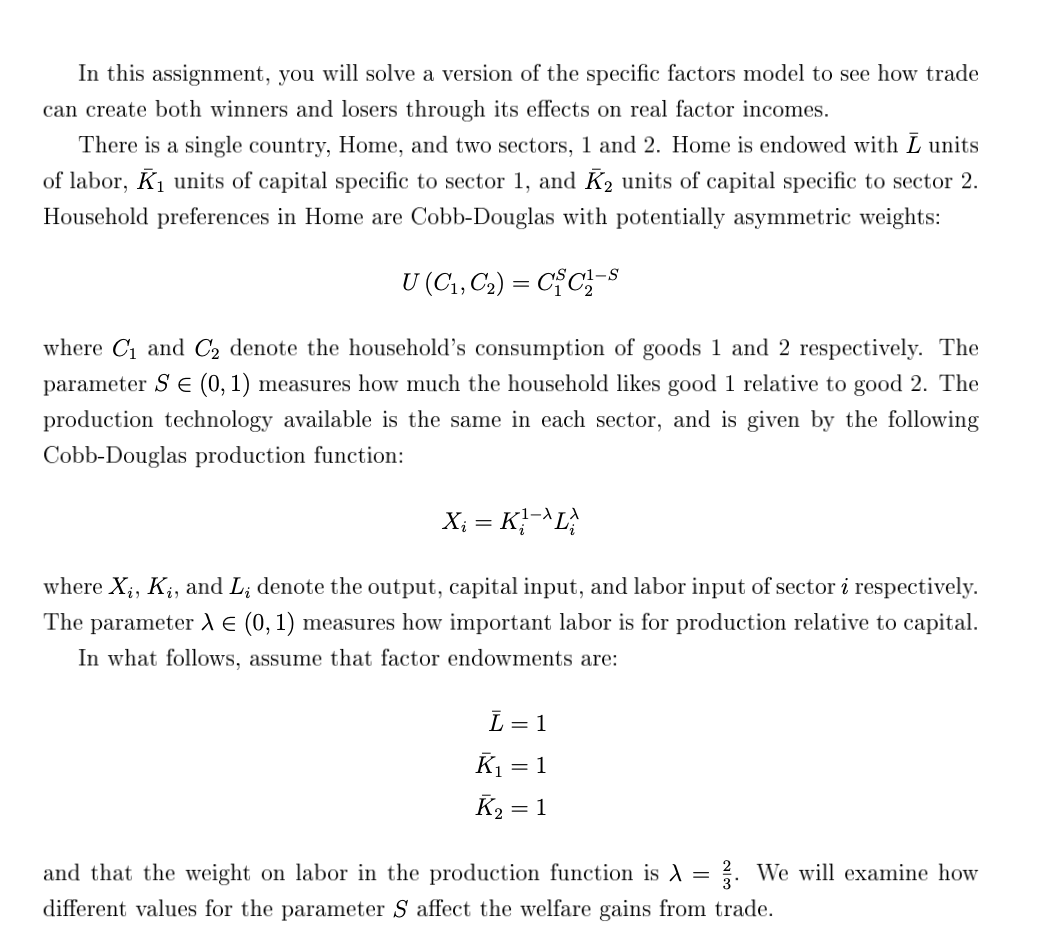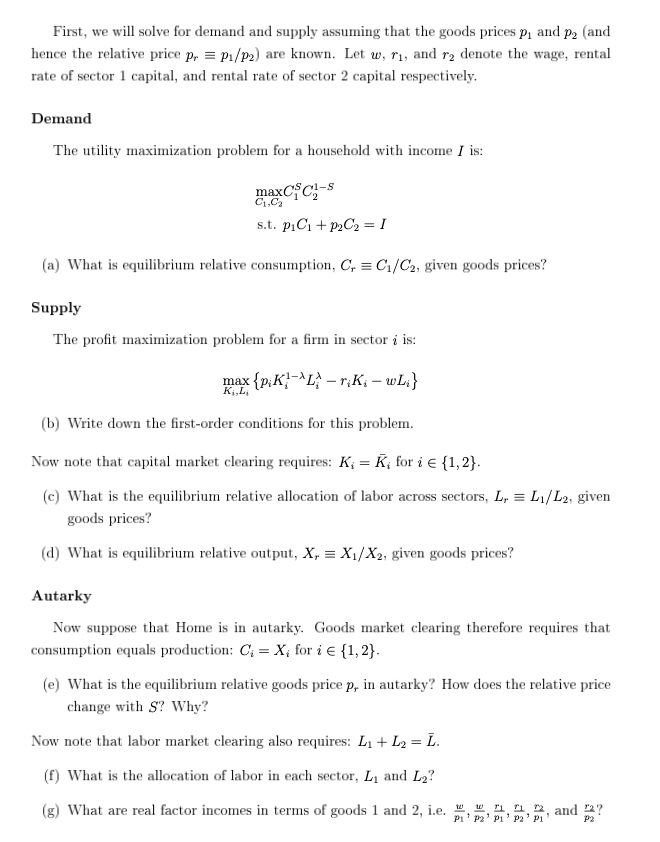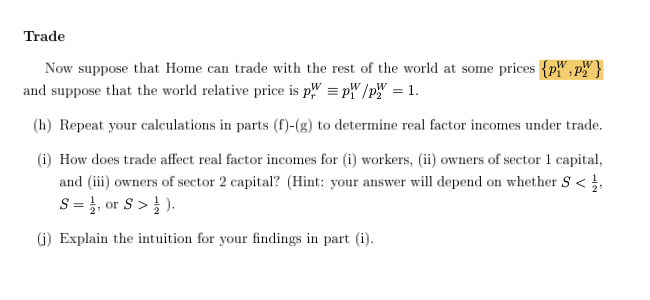In this assignment, you will solve a version of the specific factors model to see how trade can create both winners and losers through its effects on real factor incomes. There is a single country, Home, and two sectors, 1 and 2. Home is endowed with L units of labor, K1 units of capital specific to sector 1, and K2 units of capital specific to sector 2. Household preferences in Home are Cobb-Douglas with potentially asymmetric weights: U (C1, C2) = CFC2-5 where C1 and C2 denote the household's consumption of goods 1 and 2 respectively. The parameter S E (0, 1) measures how much the household likes good 1 relative to good 2. The production technology available is the same in each sector, and is given by the following Cobb-Douglas production function: Xi = KI-LA where Xi, Ki, and L: denote the output, capital input, and labor input of sector i respectively. The parameter A E (0, 1) measures how important labor is for production relative to capital. In what follows, assume that factor endowments are: L = 1 K1 = 1 K2 = 1 and that the weight on labor in the production function is A = 2. We will examine how different values for the parameter S affect the welfare gains from trade.First1 we will solve {or demand and supply assuming that the goods prices pl and p2 (and hence the relative price p, E plg'pg) are known. Let w, n, and 1-; denote the wage, rental rate of sector 1 capital. and rental rate of sector 2 capital respectively. Demand The utility maximization problem for a household with income I is: 3 15 mstl 2 01,63 E-t- 13101 +1920: = 1' (a) What in equilibrium relative consumption, 0, E 01,102. given goods prices? Supply The prot maximization problem for a rm in sector a.' is: max{piKi1\"'L? 11K; till-4} Kola [b] Write down the rst-order conditions for this problem. Now note that capital market clearing requires: K; = K} for i E {1,2}. (c) \\Vhat is the equilibrium relative allocation of labor across sectors, L, E L1,.'IL2. given goods prices? (ti) What is equilibrium relative output, X, E Xu'Xg, given goods prices? Antarky Now suppose that Home is in autarky. Goods market clearing therefore requires that consumption equals production: 04 = X; for i E {1, 2}. (e) What is the equilibrium relative goods price p, in autarky? How does the relative price change with 3? Why? Now note that labor market clearing also requires: L1 + L: = E. (I) What is the allocation or labor in each sector, L1 and L2? ' ' ' E E El. EL :1 29 [5) What are real I'actor Incomes in terms of goods 1 and 2, Le. m , m\" 131' 19: , 91' and m' Trade Now suppose that Home can trade with the rest of the world at some prices - and suppose that the world relative price is p, E ppg" = 1. [11) Repeat your calculations in parts (fl(g) to determine real factor incomes under trade. (1) How does trade aect real factor incomes for (i) workers, (ii) owners of sector 1 capital, and (iii) owners of sector 2 capital? (Hint: your answer will depend on whether S









